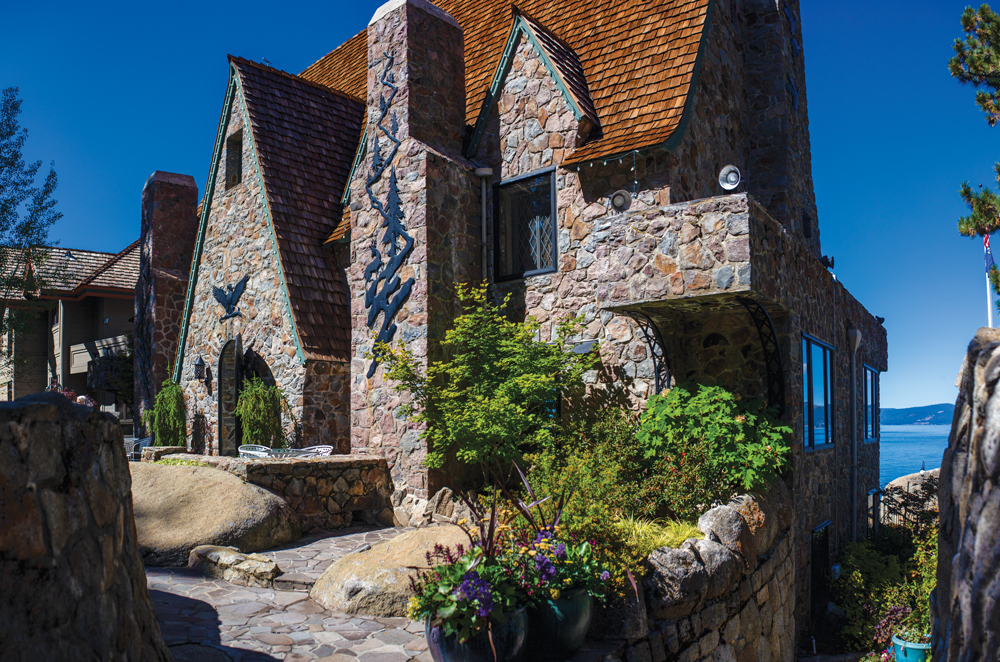Thunderbird Lodge
Spring 2023
Curiosity and majesty on the shores of Lake Tahoe.
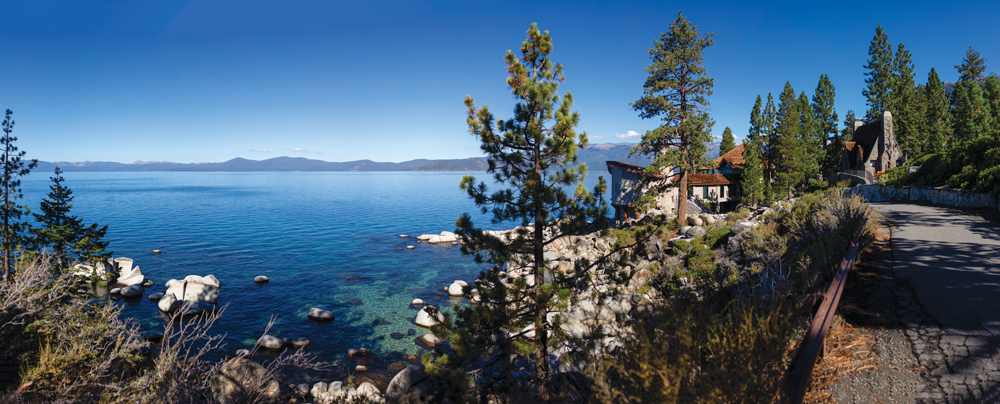
BY CORY MUNSON
Thunderbird Lodge is a sight to behold. Even from the parking lot, visitors can’t help but snap photos of the manor nestled amid pine trees and car-sized boulders. The summer home of a Depression-era millionaire, Thunderbird Lodge is lavish and remote. It is also a place of many secrets that, when revealed, help paint a picture of the mysterious man who built it.
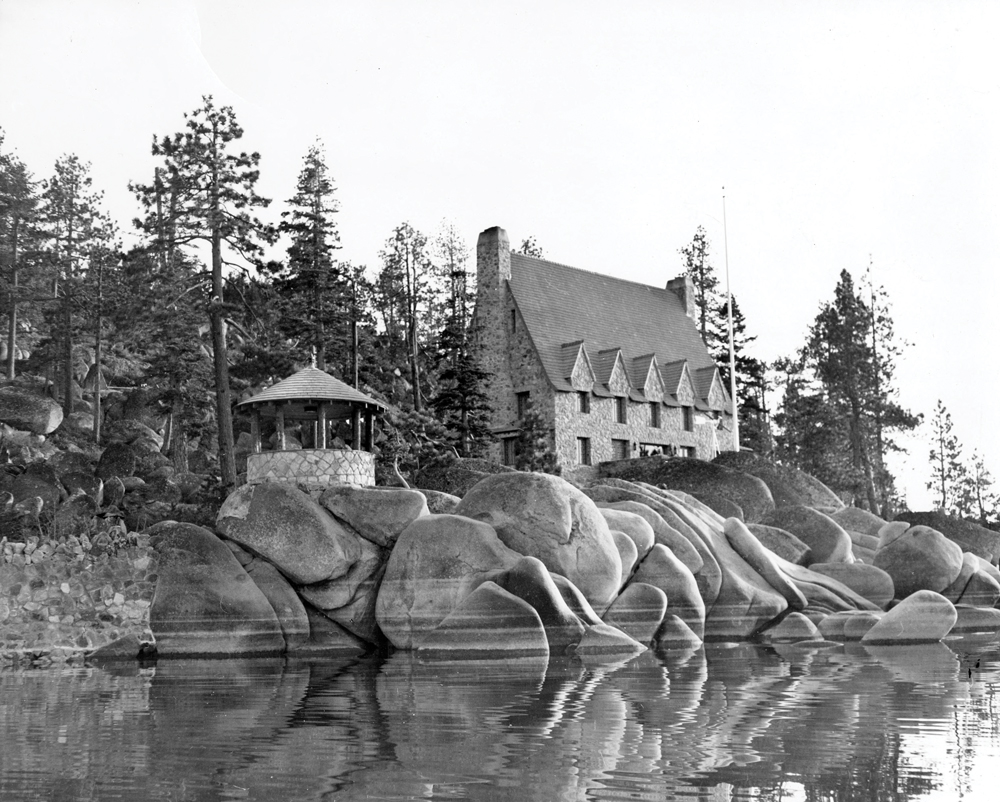
ALONE IN THE WOODS
Thunderbird Lodge is a home built in two parts. The modern section—easily distinguishable by its olive-green paneling—was completed in the 1980s. It includes a residential wing, a skywalk, and a panoramic gallery built around the old lighthouse.
The original part of the mansion was designed by prolific architect Frederic DeLongchamps and completed in 1939. Its visionary and owner was one of the era’s wealthiest individuals, George Whittell, Jr.
Whittell hailed from San Francisco’s high society—his family made its fortune selling real estate during the Gold Rush. Months before the Great Depression, Whittell pulled his money out of the stock market and stayed a wealthy man as the nation slid into financial chaos.
In 1935, Whittell purchased 44,000 acres on the east shore of Lake Tahoe. At that time, the land was mostly deforested—an unfortunate side effect of feeding The Comstock’s mines. As the land had no practical value, he got it all for a bargain of $2.3 million.
Whittell’s property stretched from Incline Village to Zephyr Cove, more than 20 miles of shoreline. The man valued his privacy and was not interested in selling any of it during his lifetime. For this reason, Nevada’s side of the lake is today mostly national forest and public land.
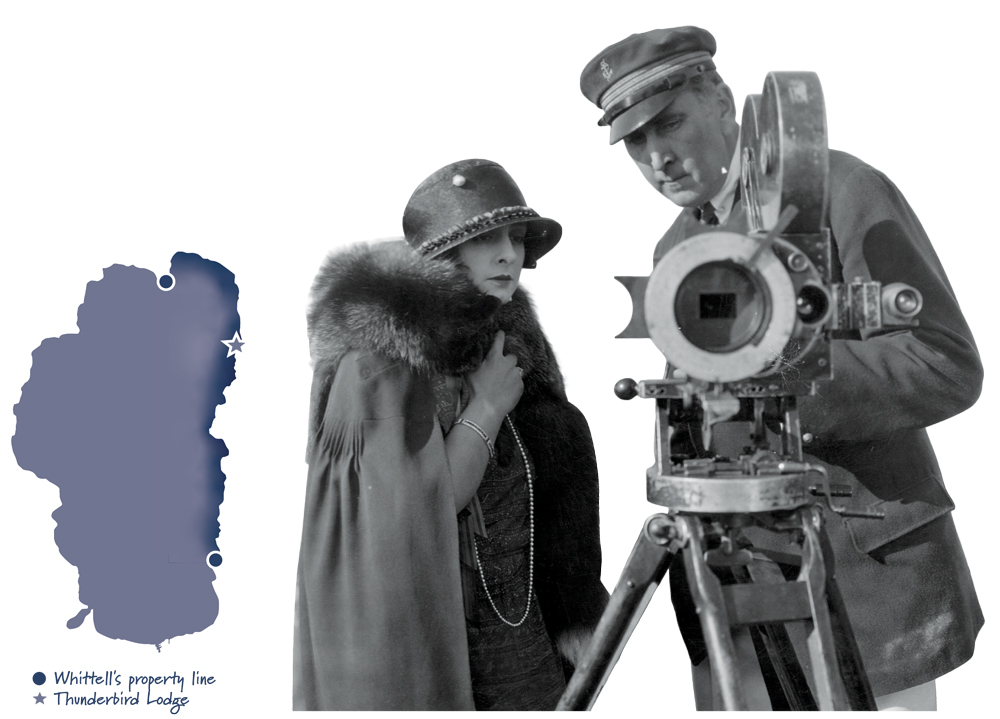
A TIME CAPSULE
Entering the original lodge, visitors will notice that most of it is living room. The great hall’s décor is heavily inspired by nature: pine paneling, pinecone print rugs, and exotic animal trophies. Upstairs, Whittell’s and his wife’s bedrooms face each other from opposite wings.
Domestic operations are found downstairs, which includes the bathrooms, kitchen, laundry room, and servant’s quarters. The rooms are furnished, stocked, and decorated in 1940s fare—including the original, payphone-sized air conditioner.
Something is missing in the original lodge, however: guest bedrooms. That was by design. Whittell was happy to host, but guests were expected vacate the premises when the fun was over.
Indeed, Whittell was a very secretive individual. He installed outdoor security systems that alerted him to approaching cars and placed hidden microphones in rooms to learn what guests knew about him.
This eccentric behavior extended to his staff: Whittell did not want them knowing his business. When around them, he and his wife spoke French, and every year they rotated in different workers. Today, you’ll find helpful labels on all the light switches, which were used to quickly orient new employees.
While functional and cozy, the lower level is not particularly large. Visitors might even assume the tour is over. But there is one door left, tucked away in the back of the laundry room. Opening it reveals a catacomb-like tunnel extending into the darkness.
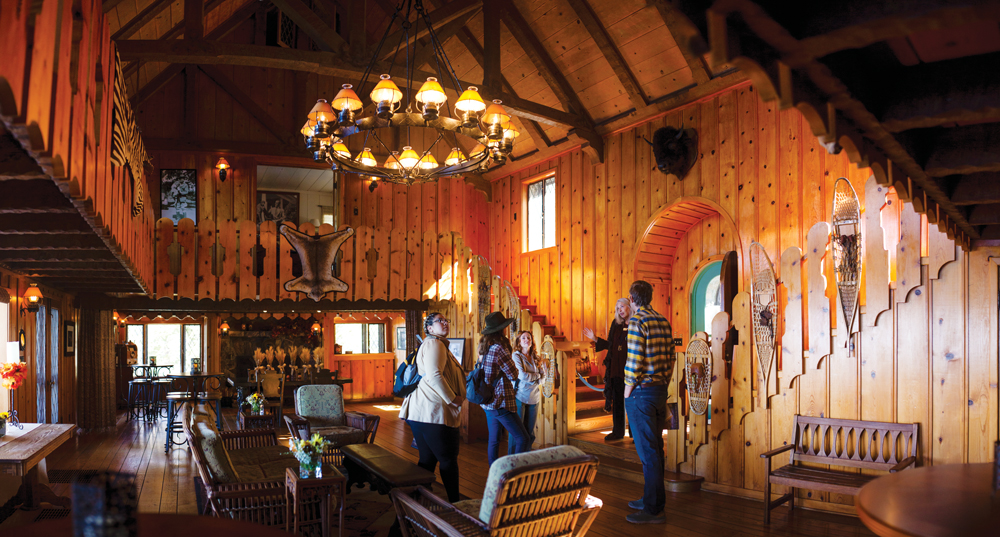
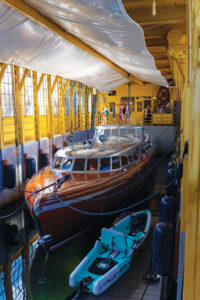 THE OTHER THUNDERBIRD
THE OTHER THUNDERBIRD
More than 200 yards of stonework passages—built by unpaid student masons from the Stewart Indian School in Carson City—wind beneath Thunderbird Lodge and connect buildings across the grounds. Of course, it wouldn’t be a millionaire’s mansion without some secret alcoves carved into the hard rock. We won’t give this part of the tour away, but Whittell did seal off one of these subterranean rooms forever.
At the end of the tunnel, filtered daylight illuminates a warehouse-like structure. Inside, a gleaming wooden ship rocks in a channel of clear water. This is the famous Thunderbird yacht.
Built in Michigan and transported to Nevada by train, the yacht was first put in the water in 1940. It was built to resemble a Douglas DC-2 airplane (think Indiana Jones), and its engines were the same ones used on the P-38 fighter plane. Whittell only used his prized Thunderbird for two summers. When WWII began, he grew concerned that the government would seize and disassemble his ship for parts. He camouflaged the boat house and hid the ship away. When Bill Harrah purchased the Thunderbird yacht in 1962, its maintenance log registered only 83 hours of use.
 The journey back to the estate follows a meandering trail above the beach that parallels the tunnel below. Thunderbird Lodge is magnificent in its scope and sprawl, but small touches make Thunderbird Lodge a work of art. The way back to the estate reveals Nordic-style cottages (one of which was used just for Whittell’s gambling nights), beaches in picturesque coves, and immaculately groomed gardens.
The journey back to the estate follows a meandering trail above the beach that parallels the tunnel below. Thunderbird Lodge is magnificent in its scope and sprawl, but small touches make Thunderbird Lodge a work of art. The way back to the estate reveals Nordic-style cottages (one of which was used just for Whittell’s gambling nights), beaches in picturesque coves, and immaculately groomed gardens.
While conceived of and built for an aristocratic family, Thunderbird Lodge now belongs to posterity. The hard work of conservation and upkeep is proudly done by volunteers, and the estate is managed by Thunderbird Lake Tahoe, a nonprofit organization. You can help support this organization by booking one of its fascinating tours of Nevada’s most interesting residence.
